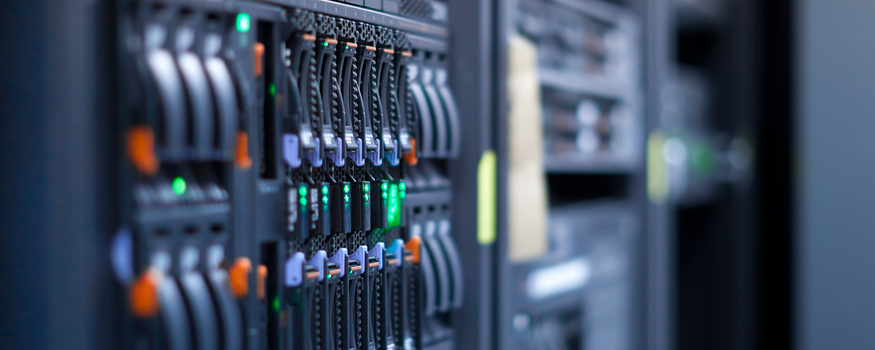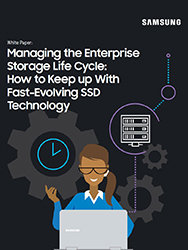Virtual desktop infrastructure (VDI) does the same thing for desktops that hypervisors like VMware and Hyper-V did for servers, enabling one physical server to host dozens or hundreds of desktops. Rather than upgrade the PCs in offices, the server can be upgraded, and all the VDI systems are upgraded too. However, dozens to hundreds of users working on files at the same time, or all turning on their PCs at 8 a.m., can overload a VDI storage system.
The critical issue is that each user is writing to a virtual hard drive, just as they would to the internal drive of their PC. One hard drive can support the input/output operations per second (IOps) necessary to emulate one PC, but starts to bottleneck when several virtual PCs are simultaneously writing files. Early storage systems that supported VDI storage best practices used large numbers of hard drives to provide the necessary numbers of IOps for each user, but this resulted in excess capacity. Newer systems use smaller numbers of SSDs rather than hard drives, since enterprise SSDs can produce 5x, 10x or even 20x the number of IOps of traditional hard drives.
Manage the Enterprise Storage Life Cycle
Download this guide to improve your storage planning and evaluation processes. Download Now
In addition to providing enough IOps for VDI storage, SSDs are also fast enough to enable real-time deduplication, which can dramatically reduce the amount of storage required for VDI, since the many virtual hard drives contain mostly the same files, which only need to be written once. A VDI storage system with 100 virtual hard drives may only use a little more space than the first virtual hard drive, since almost all of the files on the remaining 99 virtual hard drives are the same as the first, and the additional copies are only links that take up very little space.
Implementing Best Practices and Preventing Bottlenecks
VDI storage best practices dictate systems have enough IOps to simulate the total number of hard drives that actual PCs would have, with only as much storage capacity as necessary, often 20-40 gigabytes per system. Mixed-load SSDs like the Samsung PM863a are sufficient, since typical VDI traffic is cyclical, peaking at start and end of business — when virtual desktops are started and when systems are shut down — and at lunch when files are saved.
SSD-based storage for VDI provides the performance needed to enable a relatively small number of SSDs to take the place of dozens or hundreds of hard drives in physical PCs, without creating the bottlenecks that can occur when many PC users are trying to perform the same tasks at the same time. SSDs can provide more storage with less physical hardware and decreased maintenance costs.
Other simultaneous tasks, such as software updates or downloading the latest virus definitions, can also occur by default at the same time, resulting in “I/O storms,” which can slow down a VDI storage system. These not only use a large number of IOps, but may also move large amounts of data. Fortunately, the high transfer rates of SSDs, up to 5 GB/s, can also fend off IO storms, allowing the simultaneous downloads to finish quickly.
VDI systems are a natural place to utilize the advantages of SSDs, and most systems marketed to support VDI are all flash. Given the high number of input/ouput operations, client SSDs should not be used to support VDI systems — they will wear out too quickly. Only enterprise- or data-center grade SSDs have the longevity to handle the large number of IOps.
Still, with the increased capacity and read/write speeds that SSDs offer, using them to support any enterprise VDI system will optimize system usage and ensure smooth VDI operations.
Find the best storage solutions for your business by checking out our award-winning selection of SSDs for the enterprise.








